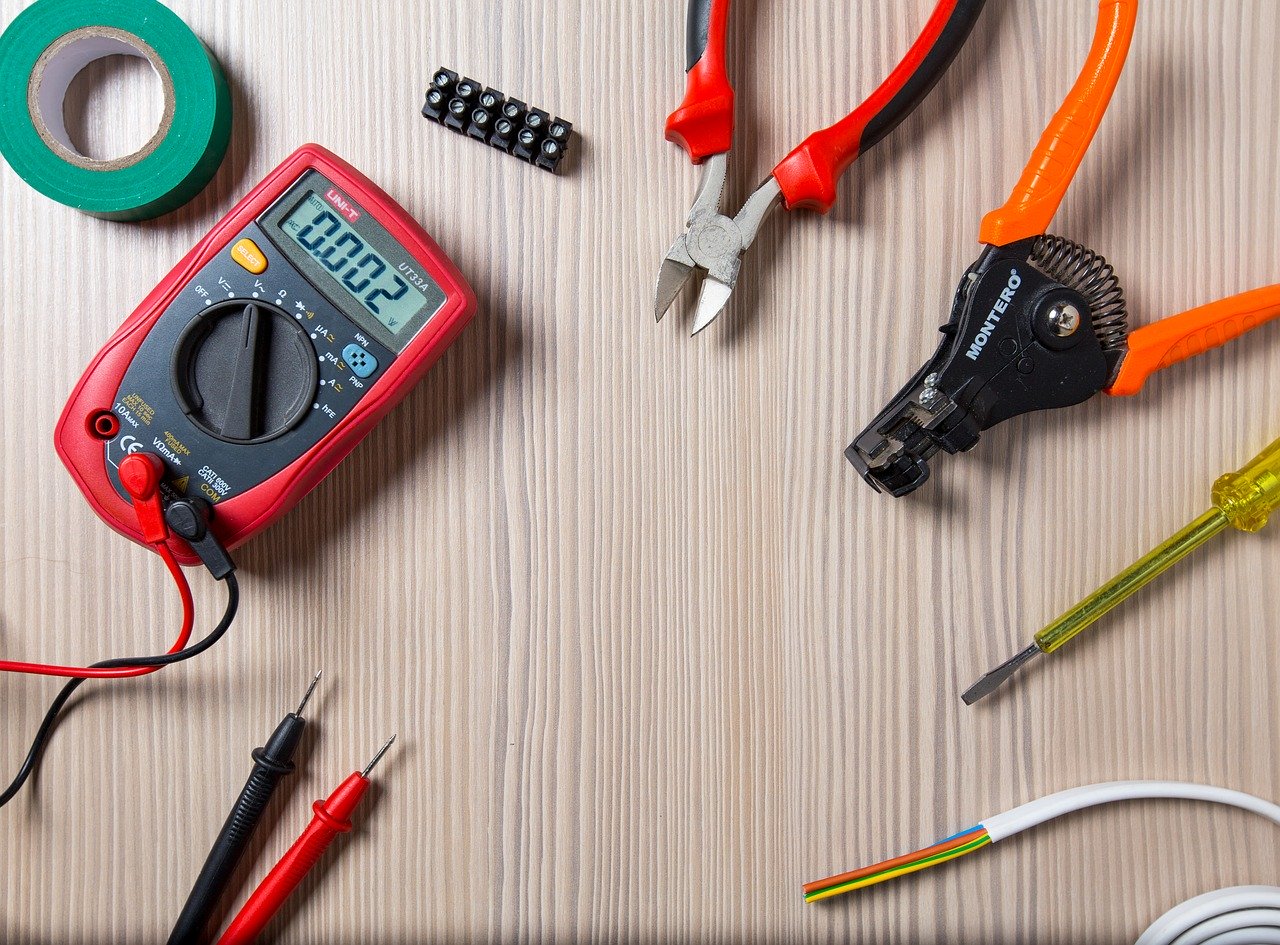Lifestyle
What to Do If Your Electrical Devices Make Noise

For the most part, electrical devices should operate quietly. You may notice a faint sound if you listen very closely, but it shouldn’t be obnoxious or disruptive.
If your power transformers are making a humming noise, it could be a sign that something is wrong. The same is true if your computer is making a lot more noise than usual, or if you hear a weird buzzing in your house. What should you do if your electrical devices are making noise?
Tracking Down the Source of the Noise
The first thing you should attempt to do is track down the source of the noise. Once you have a better idea of what’s making the noise, you can make a better plan of action for how to address it. You’ll also be able to articulate the problem much better to an electrician, should you need to call one.
- Test your appliances. First, consider testing some of your electrical appliances and devices. Closely monitor the noise and operations of things like computers, appliances, TVs, and other electrical devices. If you notice that one of these devices or appliances is making an excessive amount of noise, the problem may be isolated to it. Repairing or replacing the device in question could immediately solve the problem.
- Use a stethoscope. If you notice ambient background humming, you might be able to track down the source with a simple stethoscope or similar device. Run the stethoscope along the wall and listen closely; when does the noise get louder? You might hear noise in many areas of your house, or there might be one, obvious culprit. Either way, take note.
- Rely on process of elimination. The process of elimination is your best friend here. Access your circuit breaker and turn off all the circuits. Do you still hear the noise? If so, it’s incredibly likely that the source of the noise is not related to an electrical problem. You could have mechanical issues, you could have bees or other pests in your walls, or you might be dealing with a totally different type of issue.
- Consider the possibility of a non-electrical noise. Humming and buzzing isn’t always a result of an electricity problem. Remain open to the possibility of non-electrical noise.
The Most Common Causes of Electrical Noise
The most common causes of electrical noise include:
- Circuit breakers. Circuit breakers are designed to protect your electrical system from potential damage resulting from short circuits or electrical overload. Noise coming from your circuit breaker is probably a sign of malfunction, and should be addressed right away.
- Electric and gas meters. Digital electric and gas meters shouldn’t pose a problem, but older, analog meters may have moving parts that produce noise when not working properly. If this is the case, contact your utility provider to resolve the issue.
- Lights and fixtures. Lights and other fixtures are very common sources of electrical noise – especially fluorescent lights and dimmable lights. Replacing older bulbs with LEDs should immediately solve the problem in most cases.
- Electrical mains. Your electrical mains are home to an alternative current, and they’re bound to produce some light noise. But if this noise turns into a much louder, more metallic sound, it’s important to call an electrician and address the issue soon.
- Outlets and switches. Humming or buzzing coming from an outlet or switch is usually a sign of overloading; it could also be a sign of bad grounding. Calling a pro is the best course of action here.
- Transformers. By default, transformers produce a discernible hum or buzz as a sign of normal operations. Transformers process high volumes of electricity, so it’s only natural for them to produce some noise. However, if your transformer makes an excessive amount of noise, it could be a sign that an internal component has become damaged or that the device is not operating properly. As the transformer ages and suffers more wear and tear, the layers in the iron core can begin to separate and amplify vibrations. Problems with fans or windings within the transformer can also cause excessive noise.
Calling an Electrician
Electricity is profoundly dangerous, even for people who somewhat know what they’re doing. If you aren’t able to solve this problem quickly and easily, such as by changing a light bulb or replacing an old laptop, it’s a good idea to call an electrician. A professional will be able to help you diagnose the problem, brainstorm a solution, and execute the necessary work with minimal risk.
Humming and buzzing noises are always annoying, and if they’re loud or intermittent enough, they can seriously disrupt your quality of life. But with some proactive effort and a bit of detective work, you can track down the source of the noise and address it once and for all.
Lifestyle
Wanda Knight on Blending Culture, Style, and Leadership Through Travel

The best lessons in leadership do not always come from a classroom or a boardroom. Sometimes they come from a crowded market in a foreign city, a train ride through unfamiliar landscapes, or a quiet conversation with someone whose life looks very different from your own.
Wanda Knight has built her career in enterprise sales and leadership for more than three decades, working with some of the world’s largest companies and guiding teams through constant change. But ask her what shaped her most, and she will point not just to her professional milestones but to the way travel has expanded her perspective. With 38 countries visited and more on the horizon, her worldview has been formed as much by her passport as by her resume.
Travel entered her life early. Her parents valued exploration, and before she began college, she had already lived in Italy. That experience, stepping into a different culture at such a young age, left a lasting impression. It showed her that the world was much bigger than the environment she grew up in and that adaptability was not just useful, it was necessary. Those early lessons of curiosity and openness would later shape the way she led in business.
Sales, at its core, is about connection. Numbers matter, but relationships determine long-term success. Wanda’s time abroad taught her how to connect across differences. Navigating unfamiliar places and adjusting to environments that operated on different expectations gave her the patience and awareness to understand people first, and business second. That approach carried over into leadership, where she built a reputation for giving her teams the space to take ownership while standing firmly behind them when it mattered most.
The link between travel and leadership becomes even clearer in moments of challenge. Unfamiliar settings require flexibility, quick decision-making, and the ability to stay calm under pressure. The same skills are critical in enterprise sales, where strategies shift quickly and no deal is ever guaranteed. Knight learned that success comes from being willing to step into the unknown, whether that means exploring a new country or taking on a leadership role she had not originally planned to pursue.
Her travels have also influenced her eye for style and her creative pursuits. Fashion, for Wanda, is more than clothing; it is a reflection of culture, history, and identity. Experiencing how different communities express themselves, from the craftsmanship of Italian textiles to the energy of street style in cities around the world, has deepened her appreciation for aesthetics as a form of storytelling. Rather than keeping her professional and personal worlds separate, she has learned to blend them, carrying the discipline and strategy of her sales career into her creative interests and vice versa.
None of this has been about starting over. It has been about adding layers, expanding her perspective without erasing the experiences that came before. Wanda’s story is not one of leaving a career behind but of integrating all the parts of who she is: a leader shaped by high-stakes business, a traveler shaped by global culture, and a creative voice learning to merge both worlds.
What stands out most is how she continues to approach both leadership and life with the same curiosity that first took her beyond her comfort zone. Each new country is an opportunity to learn, just as each new role has been a chance to grow. For those looking at her path, the lesson is clear: leadership is not about staying in one lane; it is about collecting experiences that teach you how to see, how to adapt, and how to connect.
As she looks to the future, Wanda Knight’s compass still points outward. She will keep adding stamps to her passport, finding inspiration in new cultures, and carrying those insights back into the rooms where strategy is shaped and decisions are made. Her legacy will not be measured only by deals closed or positions held but by the perspective she brought, and the way she showed that leading with a global view can change the story for everyone around you.
-

 Tech5 years ago
Tech5 years agoEffuel Reviews (2021) – Effuel ECO OBD2 Saves Fuel, and Reduce Gas Cost? Effuel Customer Reviews
-

 Tech6 years ago
Tech6 years agoBosch Power Tools India Launches ‘Cordless Matlab Bosch’ Campaign to Demonstrate the Power of Cordless
-

 Lifestyle6 years ago
Lifestyle6 years agoCatholic Cases App brings Church’s Moral Teachings to Androids and iPhones
-

 Lifestyle5 years ago
Lifestyle5 years agoEast Side Hype x Billionaire Boys Club. Hottest New Streetwear Releases in Utah.
-

 Tech7 years ago
Tech7 years agoCloud Buyers & Investors to Profit in the Future
-

 Lifestyle5 years ago
Lifestyle5 years agoThe Midas of Cosmetic Dermatology: Dr. Simon Ourian
-

 Health7 years ago
Health7 years agoCBDistillery Review: Is it a scam?
-

 Entertainment6 years ago
Entertainment6 years agoAvengers Endgame now Available on 123Movies for Download & Streaming for Free
